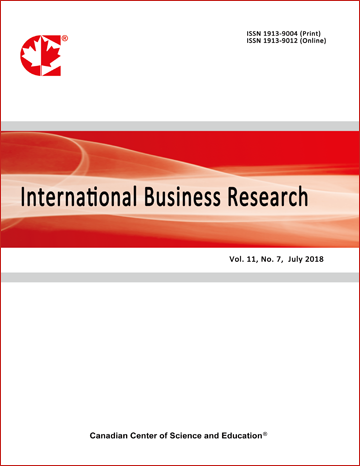An Empirical Analysis of the Relationship between Characteristics and Formative Evaluation of Training
- Muhammad Iqbal
Abstract
<!-- /* Font Definitions */ @font-face {font-family:SimSun; panose-1:2 1 6 0 3 1 1 1 1 1; mso-font-alt:??; mso-font-charset:134; mso-generic-font-family:auto; mso-font-pitch:variable; mso-font-signature:3 680460288 22 0 262145 0;} @font-face {font-family:"\@SimSun"; panose-1:2 1 6 0 3 1 1 1 1 1; mso-font-charset:134; mso-generic-font-family:auto; mso-font-pitch:variable; mso-font-signature:3 680460288 22 0 262145 0;} /* Style Definitions */ p.MsoNormal, li.MsoNormal, div.MsoNormal {mso-style-parent:""; margin:0in; margin-bottom:.0001pt; text-align:justify; mso-pagination:none; font-size:10.5pt; mso-bidi-font-size:12.0pt; font-family:"Times New Roman"; mso-fareast-font-family:SimSun; mso-font-kerning:1.0pt; mso-fareast-language:ZH-CN;} @page Section1 {size:8.5in 11.0in; margin:1.0in 1.25in 1.0in 1.25in; mso-header-margin:.5in; mso-footer-margin:.5in; mso-paper-source:0;} div.Section1 {page:Section1;} --> This paper attempted to signify the use of formative training evaluation. The authors carried out a study at three public-sector training institutions to empirically test the predicted relationship between training characteristics and formative training evaluation under the Kirkpatrick model i.e. reaction and learning. In addition, to study the causal linkage between components of formative training evaluation, the mediating role of reaction in the relationships between training characteristics and learning was also investigated. The principal finding revealed that set of seven training characteristics explained 59% and 61% variance in reaction and learning respectively. All training characteristics were found to have positive impact on reaction and learning except training contents. For reaction, the most influencing training characteristic was training method followed by training management, training objectives, training environment, and trainer whereas for learning, the greatest variation was also explained by training methods but followed by trainer, training management, training environment, and training material. Moreover, reaction partially mediated the relationships between each training characteristic and learning. The study concluded with areas of future research emphasizing on linking formative evaluation with summative one i.e. behavior and results.- Full Text:
 PDF
PDF
- DOI:10.5539/ibr.v4n1p273
Journal Metrics
h-index (January 2024): 102
i10-index (January 2024): 947
h5-index (January 2024): N/A
h5-median(January 2024): N/A
( The data was calculated based on Google Scholar Citations. Click Here to Learn More. )
Index
- Academic Journals Database
- ACNP
- ANVUR (Italian National Agency for the Evaluation of Universities and Research Institutes)
- CNKI Scholar
- COPAC
- CrossRef
- EBSCOhost
- EconBiz
- ECONIS
- EconPapers
- Elektronische Zeitschriftenbibliothek (EZB)
- EuroPub Database
- Excellence in Research for Australia (ERA)
- Genamics JournalSeek
- Google Scholar
- Harvard Library
- IBZ Online
- IDEAS
- Infotrieve
- Kobson
- LOCKSS
- Mendeley
- MIAR
- Norwegian Centre for Research Data (NSD)
- PKP Open Archives Harvester
- Publons
- Qualis/CAPES
- RePEc
- ResearchGate
- ROAD
- Scilit
- SHERPA/RoMEO
- SocioRePEc
- Technische Informationsbibliothek (TIB)
- The Keepers Registry
- UCR Library
- Universe Digital Library
- ZBW-German National Library of Economics
- Zeitschriften Daten Bank (ZDB)
Contact
- Kevin DuranEditorial Assistant
- ibr@ccsenet.org
